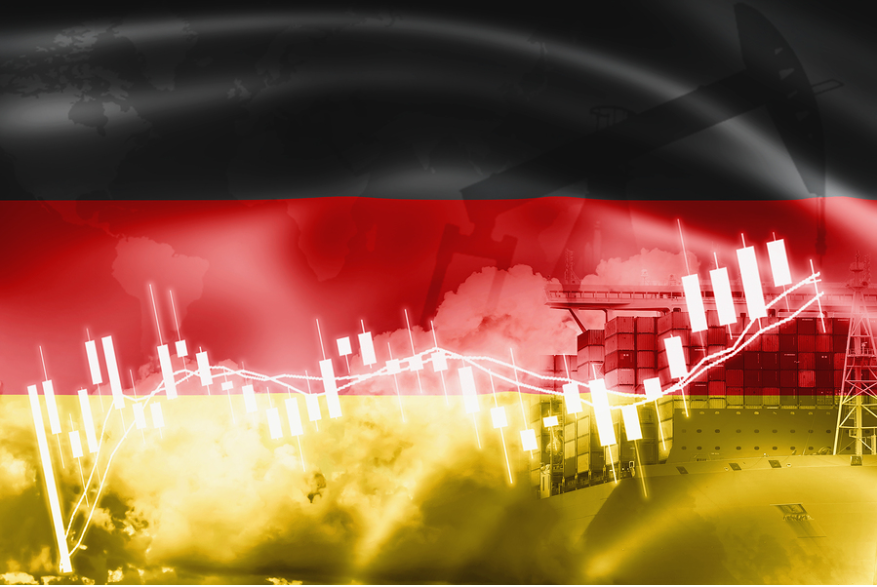ABN Amro sammenligner den økonomisk udvikling mellem Tyskland og Frankrig under corona-krisen og konstaterer, at Tyskland klarer sig langt bedre – det gælder i både industrisektoren og servicesektoren. Den tyske industri er eksportorienteret og lever i høj grad af Kina, som har stærk vækst. Men servicesektoren klarer sig også bedre i Tyskland, fordi Tyskland ikke har lavet en så hård lockdown i denne tid som Frankrig. Omvendt har Tyskland måske været for lempfældig, for høje smittetal får Tyskland til at lave nye stramninger i december, mens den hårde franske lockdown de seneste uger begynder at give resultater.
The great Germany-France divergence
Euro Macro: Germany and France moving in opposite directions –
The business cycle data for Germany and France that have been published during recent days, suggest that the economies of the two biggest eurozone countries are moving in different directions.
Germany’s composite PMI fell modestly in November (to 52.0, down from 55.0 in October) and remained above the 50 boom-bust mark, which is the level separating contraction in GDP from expansion.
In contrast, France’s index fell to levels well below 50 (to 39.9 from 47.5), which is consistent with a deep contraction in GDP.
The breakdown in the services sector and the manufacturing PMIs illustrate that the largest part of the gap between Germany and France can be explained by the stringency of the lock down measures that were introduced at the start of November and their impact on the services sector (hotels, restaurants, retail trade).
Indeed, France moved into a new partial lockdown in early November, with people only allowed to leave their homes to go to work, seek medical assistance or buy essential goods, while all non-essential shops had to be closed. In contrast, in Germany non-essential shops were allowed to remain open and only parts of the services sector (e.g. bars, restaurants, gyms) needed to be closed.
Indeed, Germany’s services sector PMI fell by 3.3 points in November (to 46.2), whereas France’s dropped by 8.5 points (to 38.0). The difference in the extent of restrictions can also be seen in the divergence in the Oxford Stringency Index in the chart below.
Although the biggest part of the economic divergence between Germany and France can be explained by the difference in the severity of the lockdown measures affecting the services sector, activity in the industrial sector is also diverging.
The manufacturing PMI of Germany edged only a bit lower in November and remained well above the boom-bust mark (at 57.9), whereas France’s manufacturing PMI dropped by more than two points (to 49.1).
This suggests that Germany’s industrial sector is growing robustly whereas that of France is contracting modestly. Robust growth in Germany’s industry and contraction in France’s was also signalled by a rise in Germany’s Ifo business climate indicator for the manufacturing sector in November and a decline in France’s INSEE November business tendency survey in industry.
It is likely that part of Germany’s relatively favourable performance can be explained by the fact Germany’s industrial sector is more geared towards exports than France’s and in particular exports to China, which have boomed in recent months.
Indeed, goods exports have a share of almost 40% in Germany’s GDP, versus around 20% in France, while the share of China in total exports is around 8% for Germany versus 4% for France. Consequently, Germany is benefiting much more from the revival in China’s industrial sector, which took off in March and has gathered momentum after the summer.
Looking forward, the gap between activity in the services sector in France and Germany should narrow in the coming weeks. Indeed, in France the new stricter lockdown measures seem to have had a limiting impact on the spreading of the COVID-19 virus, with the curve of new cases declining since the middle of November.
According to report in the press, President Macron is considering whether some of the strictest measures can be eased soon.
In contrast, in Germany the curve of new COVID-19 infections has continued to rise and Mrs Merkel has announced that the lockdown measures need to be stepped up soon.
Nevertheless, we expect the gap in activity in the industrial sectors to persist for a while. All in all, we expect France’s GDP to contract much sharper than Germany’s in Q4 (we have pencilled in -5% qoq and -1.5% qoq, respectively).










